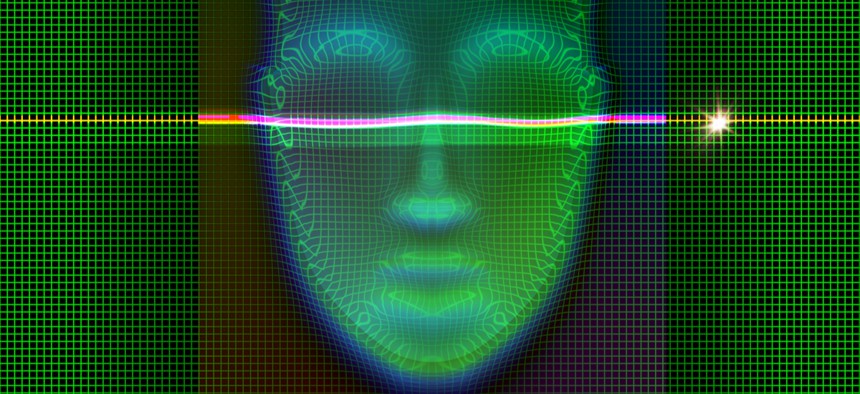TSA Launches Facial Recognition Pilot at Las Vegas Airport

Neosiam32896395/Shutterstock.com
The agency will assess how the tech verifies travelers’ live facial images against pictures taken from travelers’ identity documents.
The Transportation Security Administration will conduct a short term proof of concept in Las Vegas’ McCarran International Airport to examine how effective facial recognition technology could be at automating travelers’ identity verification, according to a recent publication from the Homeland Security Department.
For passengers who opt in, the agency will assess the technology’s capability to verify travelers’ live facial images taken at security checkpoints against the images on their identity documents.
“TSA expects that facial recognition may permit TSA personnel to focus on other critical tasks and expediting security processes—resulting in shorter lines and reduced wait times,” officials said in a privacy impact assessment regarding the proof. “Biometric matching is also expected to increase TSA’s security effectiveness by improving the ability to detect impostors.”
The agency plans to use biometrics to identify 97% of travelers flying out of the country by 2022. Last year, TSA performed an initial proof of concept, capturing real-time facial images from biometric-enabled automated electronic security gates to passengers’ e-Passports at the Los Angeles International Airport.
Instead of using automated security gates in this pilot, TSA will use a Credential Authentication Technology device with a camera, or a CAT-C device, to authenticate passengers’ identity documents. The device also will collect the image and biographic information from those documents and capture live images of passengers’ faces. The ultimate goal is to ensure that biometrics work for verifying passengers.
“To participate, passengers will voluntarily choose to enter a lane dedicated to the proof of concept,” TSA said.
Ultimately the agency plans to collect: live photos of passengers’ faces, photos from traveler documents, identification document issuance and expiration dates, travel dates, various types of identification documents, the organizations that issued their identification documents, the years of passenger’s births, as well as the gender or sex listed in the identification documents.
The agency assures that the data will be “obfuscated to the greatest extent possible.”
TSA plans to store the data on encrypted hard drives that it will remove daily and transfer to DHS Science and Technology Directorate personnel weekly. Biometric information cannot be recovered from the templates produced and the information will only be used for the purpose of the pilot, it said. The agency also plans to consult with the National Institutes for Standards and Technology during the assessment of the algorithm and to ensure that all methodologies meet industry standards.
According to the agency, signs will be posted and handouts will be shared to provide an appropriate amount of information to individuals as they ultimately decide whether or not to participate in the pilot. The agency’s communications unit will also work to share information about the program with the public.
“TSA envisions that facial recognition ultimately will deliver a significant increase in passenger throughput and improvement in security at the checkpoint,” it said. “This proof of concept will help determine next steps for implementing further automation of the TDC process.”






